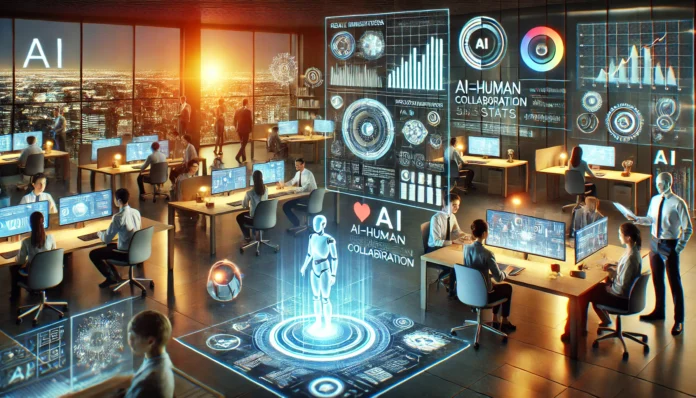The modern workplace is undergoing a seismic shift as artificial intelligence (AI) becomes an integral part of daily operations. From automating repetitive tasks to fostering creativity and collaboration, AI is not just a tool for efficiency—it’s reshaping the way we work, communicate, and engage with our teams.
Boosting Productivity Through Automation
AI is helping organizations save time and resources by automating mundane, repetitive tasks, allowing employees to focus on strategic and creative endeavors.
Examples of Automation
- Data Entry and Processing: Tools like UiPath and Automation Anywhere streamline administrative tasks, reducing errors and increasing speed.
- Customer Support: AI chatbots, such as ChatGPT or Zendesk AI, handle routine customer queries, offering 24/7 assistance and freeing up human agents for complex issues.
Impact
- Time Savings: Employees spend less time on monotonous tasks.
- Cost Efficiency: Automation reduces overhead costs and improves accuracy.
Transforming Collaboration and Communication
AI is bridging gaps in team collaboration, making it easier for employees to work together regardless of location.
AI-Driven Tools
- Smart Scheduling: Tools like Clockwise use AI to organize meetings, manage calendars, and reduce scheduling conflicts.
- Language Translation: AI-powered apps like DeepL or Microsoft Teams enable real-time translation, fostering inclusivity in multinational teams.
Enhanced Virtual Collaboration
AI features in platforms like Slack or Microsoft Teams provide smart recommendations for documents, prioritize tasks, and summarize discussions, ensuring efficient workflows.
Personalizing Employee Experiences
AI is making workplaces more engaging by personalizing experiences and catering to individual employee needs.
Applications in HR
- Talent Acquisition: AI tools such as LinkedIn Talent Insights identify the best candidates for roles based on skills and experience.
- Employee Retention: AI systems monitor employee satisfaction through sentiment analysis and suggest proactive measures to improve morale.
On-the-Job Training
- AI-powered learning platforms like Coursera for Business and EdCast offer personalized training modules tailored to an employee’s skill gaps and career goals.
Data-Driven Decision Making
AI empowers leaders with actionable insights by analyzing large volumes of data quickly and accurately.
Key Applications
- Performance Analytics: AI tools like Tableau provide detailed reports on team performance, identifying strengths and areas for improvement.
- Forecasting: AI models predict market trends, helping businesses make informed decisions about growth and resource allocation.
Challenges and Ethical Considerations
While AI brings significant benefits, it also introduces challenges:
- Job Displacement: Automation may lead to concerns about job security in certain roles.
- Bias in AI: Unconscious biases in AI algorithms can lead to unfair hiring or evaluation practices.
- Privacy Concerns: The use of AI to monitor employees raises questions about data security and privacy.
Organizations must address these issues by fostering transparency, investing in employee reskilling, and ensuring ethical AI practices.
The Future of AI in Workspaces
AI’s integration into the workplace is more than a technological upgrade—it’s a cultural shift. By enabling smarter workflows, fostering innovation, and enhancing employee experiences, AI is setting the stage for a more dynamic and inclusive work environment.
However, its success will depend on how well organizations balance technological advancements with human-centric values, ensuring that AI complements, rather than replaces, human ingenuity.





